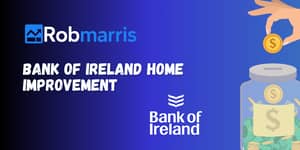
Embarking on the journey toward homeownership is more than a transaction—it’s a transformational chapter in your life. By taking proactive steps now, you can unlock the best mortgage options and step confidently toward your dream home.
Mortgage lenders use credit scores to assess risk and determine rates. Each loan type has its own thresholds, meaning you’ll need to know where you stand before you apply.
For FHA loans, a minimum FICO score of 580 qualifies you for a down payment as low as 3.5%. Scores between 500 and 579 still qualify, but require a 10% down payment and higher insurance premiums. Conventional loans typically demand at least a 620 score, though reaching 740 or higher secures the most competitive rates and lower down payments.
VA loans often have no official minimum score, but most lenders prefer applicants with scores above 620. USDA loans generally require a minimum of 640. Knowing these benchmarks allows you to set concrete goals for improvement.
The foundation of credit preparation lies in understanding what lenders see. Your credit report is a detailed ledger of your financial history, and it may contain errors that hurt your score.
By meticulously reviewing your reports from all three bureaus, you expose and remove hidden obstacles, positioning yourself for approval.
Lenders evaluate your ability to repay a mortgage by looking at your debt-to-income (DTI) ratio. A lower DTI signals financial stability and responsibility.
Most conventional mortgages require a DTI below 36%, though some accept ratios up to 43–49% when other factors are strong. To improve your profile:
By proactively lowering your DTI, you’ll not only enhance approval odds but also secure more favorable interest rates.
Your down payment affects both your loan terms and ongoing costs. Conventional loans allow down payments as low as 3%, but putting down less than 20% triggers private mortgage insurance (PMI), which increases monthly payments.
FHA loans require a 3.5% down payment for scores of 580 and above, with higher premiums for lower scores. VA and USDA loans offer 0% down options for eligible borrowers, freeing up cash for other financial needs.
Establishing a robust savings strategy months or years in advance can mean the difference between a burdensome PMI bill and more affordable mortgage payments that build equity faster.
Credit scores hinge on five critical factors: payment history, credit utilization, length of credit history, credit mix, and new credit inquiries. Focusing on each area can drive meaningful improvements.
Small, consistent steps often yield the greatest long-term benefits. Track your progress monthly and celebrate incremental gains to stay motivated.
Life’s setbacks don’t have to block your path to homeownership. Many lenders offer flexibility for applicants with past bankruptcies or foreclosures.
For FHA mortgages, at least two years must pass after Chapter 7 bankruptcy filing, provided your credit has been rebuilding since. Foreclosures may be considered after a waiting period, depending on the specific loan program and your overall financial recovery.
Resolving judgments, collections, and any outstanding federal debts is critical. Lenders typically require these items be paid in full before closing, ensuring your application faces no surprises at the final hurdle.
Beyond credit scores and debt ratios, holistic preparation sets the stage for lasting success in homeownership. Embrace a mindset of financial empowerment as you move forward.
By integrating these comprehensive credit preparation steps into your daily routine, you’ll transform a complex process into a structured pathway. Consistency, patience, and informed actions will help you cross the threshold of your new home with confidence.
Preparing your credit before a mortgage application is an investment in your future. By understanding requirements, addressing any credit report issues, and adopting disciplined financial habits, you’ll not only qualify for a mortgage—you’ll secure the best possible terms. Let your commitment today pave the way for a brighter tomorrow, where every payment brings you closer to the front door of your own home.
References













